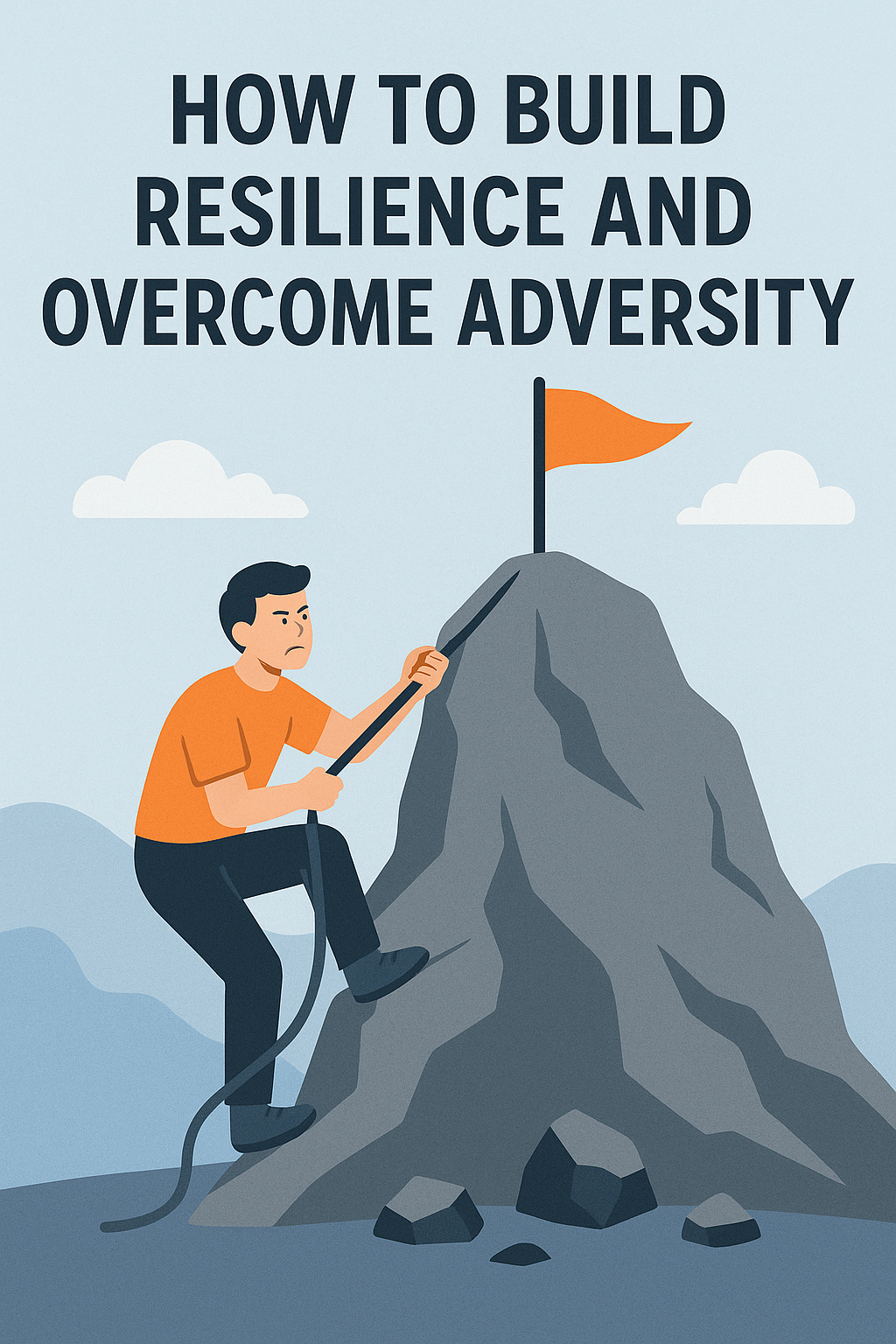Life is full of challenges, setbacks, and unexpected obstacles. Resilience, the ability to bounce back from adversity and keep moving forward, is key to overcoming these challenges and achieving success. Building resilience doesn’t mean avoiding difficulties, but rather developing the mental and emotional strength to navigate through them. In this article, we’ll explore strategies for building resilience and overcoming adversity, so you can face life’s challenges with confidence.
1. Accept That Adversity is Part of Life
The first step in building resilience is to accept that adversity is an inevitable part of life. Everyone faces difficulties at some point, and these challenges are not signs of failure, but opportunities for growth. Embracing adversity as a normal part of the human experience helps you develop a mindset that is open to learning and adapting.
Tip: When faced with challenges, remind yourself that adversity is temporary and that it’s an opportunity to grow stronger. Focus on what you can learn from the situation.
2. Cultivate a Positive Mindset
A positive mindset is essential for building resilience. Instead of focusing on the negative aspects of a difficult situation, try to reframe your thinking to focus on the positives and opportunities for growth. Resilient individuals see obstacles as challenges to overcome, rather than as roadblocks to their success.
Tip: Practice gratitude daily by acknowledging the things you’re grateful for. This shift in perspective can help you stay focused on what’s working and encourage you to keep moving forward.
3. Develop Problem-Solving Skills
Resilience is not just about enduring tough times, it’s also about finding solutions to the problems you face. Developing problem-solving skills allows you to take proactive steps when adversity strikes. The more solutions-oriented you become, the more equipped you’ll be to handle life’s challenges.
Tip: When faced with a challenge, ask yourself: “What can I do to fix this?” Break the problem into smaller, manageable steps and focus on what you can control.
4. Build a Support System
Having a strong support system is vital for building resilience. When adversity strikes, it’s important to lean on others for emotional support, advice, and encouragement. Surrounding yourself with people who care about you can provide the strength you need to get through tough times.
Tip: Cultivate relationships with friends, family, mentors, or colleagues who can offer support and guidance. Don’t be afraid to reach out when you need help, resilience is often built through connection.
5. Stay Flexible and Adapt to Change
Resilient people are flexible and willing to adapt to changing circumstances. Life is unpredictable, and rigid thinking can limit your ability to cope with adversity. By staying open to change and adjusting your approach when needed, you increase your ability to navigate through challenges effectively.
Tip: When things don’t go as planned, try to adjust your approach rather than getting stuck in frustration. Stay flexible and look for new opportunities within the change.
6. Focus on What You Can Control
During difficult times, it’s easy to become overwhelmed by everything that’s outside of your control. However, focusing on what you can control allows you to regain a sense of agency and purpose. Resilience is about taking action in the areas that you can influence, while letting go of the things that are beyond your control.
Tip: Identify the aspects of a situation that are within your control and focus on taking positive steps in those areas. Let go of worries about things you cannot change, and direct your energy where it will have the most impact.
7. Take Care of Your Physical and Mental Health
Building resilience requires a strong foundation of physical and mental well-being. Taking care of your body and mind helps you stay strong during difficult times. Exercise, nutrition, rest, and relaxation are essential for maintaining your energy, focus, and emotional stability.
Tip: Make time for regular physical activity, eat nutritious meals, and prioritize sleep. Practice mindfulness or relaxation techniques to reduce stress and improve mental clarity.
8. Learn from Setbacks
Every setback presents an opportunity to learn and grow. Instead of viewing failures as permanent, resilient individuals see them as temporary and as learning experiences. By reflecting on setbacks, you can identify what went wrong, what you can do differently, and how to avoid making the same mistakes in the future.
Tip: After facing a setback, take time to reflect on the experience. Ask yourself: “What can I learn from this?” and use those lessons to improve your approach going forward.
9. Practice Patience and Perseverance
Building resilience takes time, and it requires patience and perseverance. When facing adversity, it’s easy to become frustrated or discouraged, but staying committed to the process helps you stay focused and persistent. Resilience is about continuing to move forward, even when progress feels slow.
Tip: Break down your long-term goals into smaller milestones and focus on steady progress. Celebrate small victories along the way to maintain motivation and perseverance.
10. Stay Hopeful and Keep Moving Forward
Hope is a powerful motivator for resilience. When you maintain a hopeful attitude and believe that things can improve, you’re more likely to take action and stay committed to overcoming adversity. Even in the most challenging times, hope can provide the strength to keep moving forward.
Tip: Remind yourself that difficult times are temporary. Visualize a positive future and focus on the actions you can take to make progress, no matter how small.
